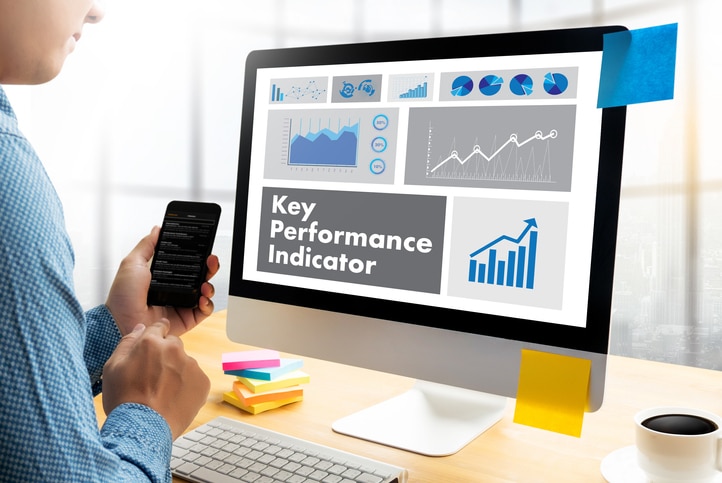SKU Science Achieves SOC2 Type II Certification

SOC2 Type II Certification: A Guarantee of Trust and Security In a context where data security and regulatory compliance are at the forefront of business concerns, obtaining a SOC2 Type II certification is not just a bonus, it’s a necessity. At SKU Science, we are proud to announce that we have obtained this prestigious certification, further reinforcing our commitment to data security and the protection of our clients’ sensitive information. What is SOC2 Type II Certification? The SOC2 (Service Organization Control 2) certification is a rigorous standard that assesses a company’s ability to manage data according to strict criteria of security, availability, integrity, confidentiality, and information protection. While the Type I certification validates processes at a specific point in time, the SOC2 Type II certification goes even further by evaluating these processes over an extended period of several months. This means that we not only comply at a specific moment but also maintain strong and consistent security standards over time. Why is this certification crucial for our clients? As a SaaS solution in demand forecasting, SKU Science processes sensitive and strategic information daily. The SOC2 Type II certification ensures that all the data you entrust to us is protected by rigorous security processes. Here’s what this means for our clients: – Enhanced Security: We implement strict controls to prevent data breaches, alterations, or unauthorized access. – Ongoing Compliance: Our practices are evaluated over time, meaning we maintain a consistent level of compliance day in and day out. – Increased Trust: The SOC2 Type II certification is recognized globally, reassuring our clients of our ability to handle their data with professionalism and care. The impact of this certification on your business For companies in the supply chain sector, where the flow of information must be seamless and precise, a security breach can have dramatic repercussions. By choosing SKU Science, you’re opting for a certified solution that adheres to the highest security standards. This allows you to focus on optimizing your operations without worrying about the protection of your data. This certification also provides a competitive advantage: it positions us as a trusted partner, capable of meeting the demands of large enterprises as well as SMEs concerned about the security of their information. Conclusion: a certification, a commitment to the future At SKU Science, SOC2 Type II certification is not an end in itself, but a step in our ongoing commitment to excellence in data security. We will continue to enhance our processes to ensure that our clients have access not only to the best demand planning and inventory optimization solutions but also to a secure infrastructure that meets their expectations. By partnering with us, you benefit from a reliable, proven, and certified solution designed to offer you complete peace of mind.
New Partnership with Demand Driven Technologies

New Partnership: Intuiflow by Demand Driven Technologies and SKU Science Elevate Demand Planning Excellence ATLANTA–(BUSINESS WIRE)–Demand Driven Technologies, an emerging leader in supply chain management solutions, is thrilled to announce its strategic partnership with SKU Science, a frontrunner in fast and effective demand planning and forecasting. This collaboration brings together two industry-leading innovators to empower businesses with unparalleled agility and resilience in their supply chains. Embedding SKU Science’s cutting-edge forecasting capabilities into Demand Driven Technologies’ Intuiflow software will enable users to harness the power of data-driven decision-making and achieve optimal results in their Sales & Operations Execution and Planning processes. (S&OE/S&OP). Seamless Forecasting with Intuiflow’s Demand Planning Application With Intuiflow’s Demand Planning application, users can generate accurate and timely forecasts effortlessly. Leveraging historical data and analyzing 644 statistical combinations, the platform automatically identifies the best forecast at any level. Custom machine learning models tailored to specific datasets offer additional options, providing a truly personalized forecasting experience. Foster Ongoing Enhancements and Collaboration The integration of data from various stakeholders and departments allows for the establishment of unified demand plans, fostering enhanced collaboration throughout the organization. Regular assessments of business performance can be made by comparing it to both the fiscal year budget and the previous year’s results. Utilizing Intuiflow’s Dashboard feature, users can seamlessly compare actuals to the annual budget, enabling insightful financial improvements. Erik Bush, CEO of Demand Driven Technologies, Comments: “Our Intuiflow solution is quickly becoming the Supply Chain Planning solution of choice for both large enterprise and mid-market clients. Our partnership with SKU Science enables us to further extend the supply chain performance improvements our clients are achieving.” Stephane Leclercq, CEO of SKU Science, Adds: “By introducing advanced demand planning capabilities to Intuiflow, we are enabling businesses of all sizes to supercharge their operational efficiency and strategic agility. Now, they can enjoy an even more holistic and intuitive suite of tools to drive their success.” For more information on the groundbreaking capabilities of this partnership, please send an email to contact@skuscience.com. About Demand Driven Technologies: Demand Driven Technologies is a leading provider of supply chain management solutions, offering innovative tools and methodologies that enable businesses to adapt and excel in today’s complex supply chain environment. With a customer-centric approach, Demand Driven Technologies empowers organizations to achieve optimal inventory levels, reduce lead times, and improve overall supply chain performance. About SKU Science: Launched in 2018, SKU Science has rapidly become a trailblazer in supply chain management. Harnessing the power of modern web technologies and Big Data, SKU Science delivers solutions that are not only robust but also user-friendly and easily deployed – a perfect fit for businesses of all sizes. With this fusion of cutting-edge technology and ease of use, SKU Science has established itself as a prime mover in the realm of demand planning. Free Trial – Fast & Simple demand forecasting solutionEasy and affordable – No credit card requiredTry SKU Science now ! SIGN UP FREE
Reducing stockout impact with aggregate forecasting

Many companies do not have a process for archiving or tracking stockouts, even though they can have a significant impact on sales. This article will outline how organizations can minimize the effect of stockouts on demand forecasting through the use of aggregate forecast methods and actual sales data. While it would be preferable to use actual demand rather than historical sales by eliminating stockouts, our experience indicates that most companies have not yet reached this stage of maturity in their supply chain management. Free Trial – Fast & Simple demand forecasting solutionEasy and affordable – No credit card requiredTry SKU Science now ! SIGN UP FREE Benefits of using aggregated data for demand forecasting The best practice in supply chain management to achieve greater forecast accuracy is to calculate forecasts at an aggregate level. Here are some reasons why demand forecasting KPIs typically improve with this approach: – Increased sample size: By aggregating data from multiple sources, you increase the sample size of your data, which can improve the accuracy of your forecasts. A larger sample size can provide a more representative view of the population, allowing for more robust and reliable predictions. – Reduction of noise: Aggregating data can help reduce the effects of noise and outliers in the data. For example, if you’re forecasting demand for a product, an unusually high demand from a single customer or location might skew the data and lead to an inaccurate forecast. By aggregating data across multiple customers or locations, you can reduce the impact of these outliers and produce more accurate forecasts. – Better understanding of underlying patterns: Aggregating data can help you identify patterns and trends that you might not see when working with individual data points. For example, if you’re forecasting demand for a product across multiple stores, you might notice that demand tends to be higher on weekends or during certain months of the year. By identifying these patterns, you can create more accurate forecasts. – More explanatory power: Aggregating data can give you a more complete understanding of the factors that influence demand for a product or service. For example, by analyzing data from multiple stores, you may be able to identify both a seasonal pattern and store-specific characteristics that affect demand. Combining these two factors can provide more explanatory power and more accurate forecasts. Effective data grouping techniques for accurate demand forecasting Now let’s see what type of data we could use to group our data in order to apply our forecasting models. – Product data such as product size, weight, color, price, brand, segment, category, or any other field characterizing a product can be used to aggregate data. – Store data can also be used to understand how demand for a product varies across different store locations. This can include information such as store size, layout, and demographics of the surrounding area. – Sales channel is another example of information that can be used to organize your data before computing the forecast since the demand for specific channels can be very different. – Marketing data such as promotions or advertisements that were run for the product, can help understand the effect of these activities on demand. Therefore, grouping data using these fields or a combination of these fields can lead to better accuracy when forecasting demand. This table shows the average error rate in % for forecasts computed at a specific aggregate level Improving demand forecasting accuracy through aggregate data and stockout analysis If historical sales data is impacted by stockouts, it can lead to inaccuracies in demand forecasting because stockouts can cause fluctuations in sales that do not reflect true underlying demand. As seen earlier, working with aggregate data can help improve the accuracy of demand forecasting in this situation for a few reasons: – Smoothing effect: Aggregating sales data from multiple sources can help to smooth out fluctuations in sales caused by individual stockouts. For example, if sales data from one store is affected by a stockout, it can be offset by sales data from another store where stockouts did not occur. – Better understanding of the impact of stockouts: By aggregating data across multiple stores, you can also gain a better understanding of how stockouts are impacting demand. This can help you to identify which products are most affected by stockouts, as well as which stores or regions are more affected, you can use this information to plan and manage your inventory. – Reduced variability: Stockouts can cause significant variability in sales data, which can be especially problematic for statistical forecasting methods that rely on historical data. By aggregating data, you can help to reduce this variability, which can improve the accuracy of your forecasts. It’s important to note that even when working with aggregate data if stockouts are a frequent and persistent problem, it can make the forecasting process more challenging, and it’s important to consider ways to address the root causes of stockouts to improve forecast accuracy. Free Trial – Fast & Simple demand forecasting solutionEasy and affordable – No credit card requiredTry SKU Science now ! SIGN UP FREE Gains on forecasting KPIs for our customers As discussed earlier, there are several possible options for aggregating data to calculate the aggregate forecast, each with a specific error rate. It is important to consider several options and choose the most appropriate one for your needs. Forecast KPIs such as bias and error will help you identify the best level of aggregation for your calculations. However, it can be challenging to split aggregate forecast data into underlying forecasts for each period, which can be time-consuming and may result in inaccuracies. SKU Science has developed a fully automated feature that computes underlying forecasts for each period, making it easy to compare error rates and choose the relevant aggregate level. Our customers have been using this feature to lower their error rates and improve the accuracy of their demand forecasting. The impact can be significant, as we have seen up to 20%
Challenge your sales team’s forecasts with KPIs

To improve the performance of your supply chain, it is essential to have the right tools to support demand planning within your S&OP. Thus, you can limit stockouts and keep your inventory at a reasonable level while ensuring a high level of service. A key part of demand planning is getting the right forecast. Very often, these forecasts come from salespeople and distributors, however, the quality of these forecasts is frequently questioned by supply chain professionals. Focus on forecast KPIs for sales teams In practice, it is necessary to measure the quality of these forecasts (the famous KPIs). But it’s a difficult task to achieve with Excel. One can safely write, that there are as many ways of evaluating these forecasts that there are companies. We provide a performance tracking table below, to quickly identify items or levels in the organization requiring corrective action. SKU Science provides a solution to educate all players in the supply chain to improve forecasting. It is possible to recreate this table by hand in Excel, but it is a complicated task and requires monthly maintenance. Several customers have asked us to be able to compare the forecasts provided by their sales departments with those calculated by our platform.Hence, on this table, you can see 2 types of forecast. All the KPIs are calculated for the 2 two types of forecasts (depending on the lead times of your supply chain, otherwise it doesn’t make any sense) and compared to each other to calculate the added value of your sales team. Measure the forecast value-added of your teams Your teams spend time forecasting, but it only makes sense if they really improve the forecasting from a tool like SKU Science or some other platform. By comparing these data, you finally know if you are adding value, which must be your only goal. Concretely, how does this happen?From historical demand data, the platform computes forecasts for the last cycles. During each cycle, a new external forecast was uploaded from Excel onto the platform. These rolling forecasts from both the platform and sales representatives are archived at each new cycle. We analyze the forecast data with one month difference for each period in the example below.Instead of focusing on forecasts at the SKU level (you can own a lot of them), we study forecasts at a more macroscopic level, such as a territory or a warehouse (in this case Paris). This exercise is replicable at any level. The platform allows us to effortlessly obtain KPI tables calculated from quantities or financially valued. In the example below, a weighted KPI table is generated from the revenue of each SKU. This remains the best option to analyze KPIs and have a real impact on the company.Each calculated forecast KPI has 3 rows. • SKU Science: indicates the values concerning the platform forecasts.• User: indicates the values for the forecast from the sales department and uploaded to the platform.• Value added: represents the improvement or degradation made by the user compared to SKU Science. Forecast value-added and weighted KPIs It is easy to see in this table that the teams’ added value related to the forecast accuracy, in red, is 4% lower than the one obtained by the platform. Therefore, it is necessary to take corrective actions during the next cycles, to turn this figure into a positive. We will share some advice in another article to be successful. Without improvement in the next cycles, it is preferable not to change any platform’s forecasts and to avoid wasting your teams’ time. Another important piece of information that can be extracted from this table is the average difference between the actual turnover for each period and the forecast bias. Here we see, thanks to the negative sign, that the sales department underestimates on average $ 634k per month compared to the actual turnover. Shortages are to be feared on certain items in the Paris area without a good inventory policy. A positive sign would indicate a tendency to overestimate quantities, which would inevitably result in an increase in inventory level. The ideal situation would be to have a percentage bias close to zero. In general, it is good practice to analyze forecast KPIs against turnover or against the margin generated by the company.For some key articles, however, it may be interesting to analyze this table from the perspective of quantities. Free Trial – Fast & Simple demand forecasting solutionEasy and affordable – No credit card requiredTry SKU Science now ! SIGN UP FREE
How to set up a demand forecasting process

Forecasting demand is always a means to an end, not the end itself. A forecast is only relevant if it enables a supply chain to take appropriate actions. A good forecasting model should allow your supply chain to improve its service level, plan better, reduce waste, and overall costs. In this blog article, we introduce the 4-dimension demand forecasting framework to help you define the appropriate process for your organization. When setting up a demand forecasting process, you will have to set it across four dimensions: granularity, temporality, metrics, and process. 1. Granularity You should first work on determining the right geographical and material granularity for your forecast. ?️ Geographical. Should you forecast per country, region, market, channel, customer segment, warehouse, store? ? Material. Should you forecast per product, segment, brand, value, raw material required? To answer those questions, you have to think about the decisions taken by your supply chain based on this forecast. Remember, a forecast is only relevant if it helps your supply chain to take action. As an example, let’s assume you need to decide which products to ship from your plant to your regional warehouses. In that case, it might be a good idea to aggregate demand per each region allocated to a warehouse and forecast demand directly at this geographical level. To forecast the demand allocated to a warehouse, it is a bad practice to use historical orders as they are impacted by logistic constraints. Instead, you should forecast the warehouse demand based on what should be served from the warehouse if there were no constraints (in other words, forecast the demand coming from the geographical region that should be served by the warehouse). Free Trial – Fast & Simple demand forecasting solutionEasy and affordable – No credit card requiredTry SKU Science now ! SIGN UP FREE 2. Temporality Once you know at what granularity level you will be working on, you should pick the right forecasting horizon and temporal aggregation (time bucket). Many supply chains stick to forecast demand 18 or 24 months ahead, although you may need to pick a limited horizon to focus on. ?️ Temporal Aggregation. What temporal aggregation bucket should you use (day, week, month, quarter or year)? ? Horizon. How many periods do you need to forecast (one month, six months, two years)? Again, you should answer these questions by thinking about what your supply chain is trying to optimize/achieve and the lead times involved with these decisions. For example, let’s assume your suppliers (or production plants) need to receive monthly orders/forecasts three months in advance. In that case, you know you should work on monthly buckets and with a horizon of 3 months (M+1/+2/+3). You can also skip M+4 (or at least not focus on it). If you need a forecast to know what goods to ship from your central warehouse to your local warehouses, you should focus on a horizon equivalent to your internal lead time. ❗ Models and Forecasting Horizon. Statistical models can easily produce forecasts over a very long horizon (theoretically infinite). This is not the case with machine learning models. So, you might have to stick to statistical models for long-term forecasting. 3. Metrics Usually, practitioners overlook the question of forecasting metrics. Choosing the right metrics for a forecasting process/model is actually quite simple and will have profound impacts on the resulting forecasts. Depending on the metric selected, you might give too much importance to outliers (the RMSE flaw) or risk a biased forecast (the MAE flaw). Here are a few pieces of advice to choose the right forecasting metrics: ❌ Avoid MAPE. Many practitioners still use MAPE as a forecasting metric. This is a highly skewed indicator that will promote underforecasting. ✅ Combine KPIs. Choosing a combination of KPIs (such as MAE & Bias) will often be a good compromise enabling you to track accuracy and Bias while avoiding most pitfalls. ✅ Track consistent Bias. If a consistent bias (over/under forecasting) is observed on an item, something is probably wrong with the model/forecasting process. ? Weighted KPIs. You can try weighting each product (or SKU) in the overall metric calculation based on its profitability, cost, or overall supply chain impact. The idea is that you want to pay more attention to SKUs that matter the most. Beyond the math, it is important to align the forecasting KPIs to the required material and temporal granularities. For example, let’s assume you are interested in ordering goods from an overseas supplier with a lead time of 3 months. In that case, you should measure accuracy over a forecasting horizon at months +1,+2, and +3–or even better, calculate the cumulative error over three months–instead of merely looking at the accuracy achieved at month+1. 4. Demand forecasting process Now that you know your material and temporal aggregation, horizon, and metrics, you can set up a process. This process should be defined through three specific aspects. – Stakeholders. Who will review the forecast? Bringing different points of view to the table – using various information sources – will help create a more accurate forecast. – Periodicity. When do you review the forecast? Updating your forecast more often might improve its accuracy (as you have fresher data at hand). Updating it too often might create chaos as you overreact to demand changes and consume too many resources for a limited added value. – Review Process. How do you review the forecast? At the core of any forecasting process, there should be a measurement of the forecast value-added. Tracking each team member’s value-added will enable you to improve the forecasting process efficiency (and refine the relevant forecasting periodicity and stakeholders). ? Forecast Value Added Framework. A forecasting process framework that tracks each team/process step’s added value compared to a benchmark (or the previous team’s input). It was imagined and promoted by Michael Gilliland in the 2010s (see his book here). Our advice for your demand forecasting process – Short-term forecast. Let’s assume you need to decide every week what to
6 tips to get reliable demand forecasts post-COVID-19

The COVID-19 crisis has impacted all demand forecasting models, whatever your industry. Depending on the type of items you’re dealing with (low vs high demand) or your industry sector (retail, food, health care, utilities, logistic, manufacturing etc.), some measures need to be taken in order to plan (relatively) accurately for the months to come. The question is: “How should we treat actual demand data for March, April, and May 2020?” Demand during COVID-19 and its impact on the forecast model (Season & Trend model) Well, as you can imagine, there is not a single answer to this question, but we will try below to list all available options. We’re pretty sure that one will fit your business. The first obvious option is to tag these values as outliers. If you decide to treat March to May 2020 demand data as outliers, you then have several options for your forecast calculations. • You can remove them from the forecasting window. • You can implement some tactics to reduce their weight in your forecast models. • You can use historical data from previous years to replace these particular periods, by taking an average from 2017 – 2019 as an example. • You can use calculated forecast data from your model to replace these particular values. We will explain soon in another article how to quickly obtain your forecasts using this method with SKU Science. Demand during COVID-19 replaced with forecast data (Season & Trend model) Once your tactical choice is made – and taking into account that we are still in a VUCA world – you may consider allowing your forecast baseline to quickly adjust to changes in demand by increasing forecast parameters sensitivity. Dealing with Q1 and Q2, 2020 demand data will not just help you to properly plan for the rest of the year but also for Q1 and Q2, 2021. Indeed, for those with a seasonal demand, it is likely that your forecast models will “learn” a COVID-19 seasonality and predict a demand drop in March – May 2021. For some industries, flagging the lockdown months as outliers is not always the best option, because those sales could represent a new structural change that is likely to persist into the future – video conferencing solutions and medical teleconsultations spring to mind. Another example is an increased consumption of flour that could remain at this higher level in the months to come, as home cooking has gained the upper hand over fast food and eating out. Therefore, it is important for demand planners to know their industry so that they can properly interpret historical demand. In short, flagging recent demand as outliers is counterproductive if your customers have now changed their long-term behavior due to the crisis. Try our fast & simple demand forecasting solutionSign up for free to SKU Science today!Pre-loaded sample date – No credit card required SIGN UP FREE Another tactic to optimize your sales – while optimizing your working capital – would be to maintain low inventory levels for end products while maintaining a good level of raw material and WIP to allow for a rapid production ramp-up, in order to stay ahead if a demand increase arises. In conclusion, there is no forecasting silver bullet that is effective for all businesses. The demand over the last 3 months has been exceptional: it is likely that, in most cases, the post-COVID-19 demand will be different from the demand we have experienced during the last 3 months. Hence – except for some essential industries (e-commerce and food etc.) – it would be a safe bet to alter the demand data for March, April, and even May. If you currently use a statistical or a black-box algorithm it might be time to review how your forecast engine works to prevent it from overreacting to the COVID-19 crisis.
What is the right inventory policy for your business?

Whatever your activity, optimizing your inventory management is key to reducing the many associated costs, such as capital investments, risks, deterioration, insurance, personnel, logistics, and infrastructure. The ease or difficulty of accurately predicting a demand through the correct demand planning process, depends on your business activities. Some items may show a good forecast accuracy while others can demonstrate intermittent demand and are therefore difficult to predict.Therefore, understanding the different inventory policies allows you to choose the most suitable system in relation to the cost strategy associated with each item. An inventory system sets out “how many” parts to order or manufacture. There are three options: – Lot for lot: in which the order exactly matches the consumption requirements for the period– Fixed order quantity: for example, this might depend on the packaging (or multiples of these lots)– n periods of supply: a quantity large enough to meet demands during these n periods. An inventory policy also specifies “when” to place purchase orders or manufacturing orders. Two options are referenced: – Order point: the order is triggered when the stock falls below a certain threshold (for example, an order is made when there are fewer than 10 items available in stock).– Periodic replenishment: The time between two orders is fixed (for example, an order is placed every Monday morning). In this article we will cover two commonly used policies: – The order point (fixed replenishment)– Periodic replenishment (variable quantity) Try our fast & simple demand forecasting solution Sign up for free to SKU Science today!Pre-loaded sample date – No credit card required SIGN UP FREE Order point policy (fixed replenishment) This method is used when an order of the same quantity is placed with a supplier (or a production order) every time the level of available stock falls below a predetermined threshold. See example below: If 3, or fewer than 3, items remain in stock, a replenishment order is generated and will always be fixed at 10 items. Benefits: This is a reassuring policy that allows you to place an order whenever necessary. Limitations: It does not allow you to group orders with the same supplier, which can incur additional costs. Periodic replenishment (of variable quantity) This is a “fixed schedule” replenishment system, where the time between two replenishment orders is the same.The quantity ordered during each period is always different, and is based on the stock target and the inventory position at the time of the order.In the example below, we show an order placed every 5 periods, so as to reach a final stock level equal to 13. Benefits: The periodic replenishment is the most commonly used policy, because it allows you to group orders with the same supplier. This method benefits both your organization and your supplier by limiting exchanges, and by optimizing planning operations such as limiting the number of deliveries, and the loading of trucks or other means of transportation. Limitations: A future article dedicated to safety stock, will demonstrate that this policy is, in fact, riskier than the order point policy because of activity problems that can arise from depletion. Indeed. if you are already out of stock on Monday and you can only place your order on Friday, you will be 4 days without stock, since it is impossible to order between two periods. This is likely to result in lost revenue and missed sales opportunities. This kind of problem does not exist with the order point (fixed replenishment) method. Other inventory policies are possible Many other inventory policies can be envisaged. Thus it is possible to replenish a fixed quantity, during each period. It suffices to set the trigger for a minimum order threshold. These differing policies can be adapted according to the needs of each activity. However, the formulas for calculating safety stock would then be much more complicated to implement. You can get more details on the different inventory management policies and demand forecasting methods in the book Data Science for Supply Chain Forecast, written by Nicolas Vandeput. Try our fast & simple demand forecasting solution Sign up for free to SKU Science today!Pre-loaded sample date – No credit card required SIGN UP FREE
How to detect outliers for improved demand forecasting

Most supply chains expect some demand variability and therefore, one must choose the correct forecast model, as can be seen in our previous articles. Regardless of the nature of this variance, exceptional factors may happen, and can seriously impair the reliability of a given model. We call these data “outliers”. These outliers result firstly from exceptional demand, such as stock liquidations, temporary stops in production, or external restrictions, which may be due to logistical or infrastructural constraints making both the composition of the stock or the fulfillment of customer orders temporarily impossible. Even though some demand observations are real, it does not mean they are not exceptional and shouldn’t be cleaned Secondly, there are also mistakes and errors, which are obvious outliers. If you spot these kinds of errors or encoding mistakes, you need to implement process improvements in order to prevent them from happening again. Considering the negative effects outliers can bring to your business, knowing how to detect them is essential and there are some techniques that can be used to address this issue. Try our fast & simple demand forecasting solution Sign up for free to SKU Science today!Pre-loaded sample date – No credit card required SIGN UP FREE Winsorization This first idea is a rather simplistic approach of defining a certain minimum and maximum range in which the data will simply be disregarded. Statistically, this margin is defined as the percentile, which means the value below which x% of the observations in a group will fall. For example, 99% of the demand observations for a product will be lower than its 99th percentile. This approach may be efficient, but it can also result in some problems, such as detecting fake outliers in a dataset without outliers (see figure 1 below); or in the case of real outliers, it doesn’t sufficiently reduce the value keeping it at a level way above our expectation. It is an approach that ends up requiring a very accurate critical analysis by the planner, so it is not as efficient and reliable as it should be, as it would take out the high and low values of a dataset, even if they aren’t exceptional per se. Figure 1: Winsorization of a simple dataset without outlier Standard Deviation Another approach would be to use the demand variation around the historical average and exclude the values that are exceptionally far from this average, according to a certain range between two thresholds centered on the demand. Figure 2: Distance to the mean With this method, in a situation without outliers, we do not change any demand observation (we keep all values in this case), and in another situation with an outlier (see Y2 below), we do not change the low or high demand points but only the actual outlier (from 100 to 49 in the figure below). Figure 3: Outlier detection based on standard deviation (Normalization) Although it may seem to solve all the issues arising from the Winsorization approach, the actual limitation will arise when you have a product with a trend or seasonality. In this case, its historical average will not accurately represent the actual average for that given period, and consequently the thresholds may not correctly limit a possible outlier. Error standard deviation In order to solve the drawbacks from the Standard Deviation and Winsorization let’s go back to the definition of an outlier. An outlier is a value that you didn’t expect. In other words, it is a value far away from your prediction (i.e. your forecast). To spot outliers, we must therefore analyze the forecast error and see which periods are exceptionally wrong. If we compute the error for our forecast we would obtain a mean error and a standard deviation. You can refer to the book Data Science for Supply Chain Forecast, by Nicolas Vandeput to see real-life examples and more details. The figure below illustrates our results obtained from our forecast. Figure 4: Outlier detection via forecast error This smarter detection method, which analyzes the forecast error deviation instead of simply the demand variation around the mean, is able to flag the outliers much more precisely and reduce them back to a plausible value. Therefore, this should be your preferred method for accurate demand forecasting. Try our fast & simple demand forecasting solution Sign up for free to SKU Science today!Pre-loaded sample date – No credit card required SIGN UP FREE
How to improve your S&OP thanks to forecast KPI

The S&OP process requires the correct use of demand forecasting methods, as described in previous articles. However, it is essential to efficiently monitor forecasts accuracy in order to improve your supply chain performance. If the forecast accuracy level is low, the production planning process will be impacted causing excessive inventories or product shortages and availability, with consequent delays in deliveries to customers, or in worst cases loss of sales and business. Within this context, selecting indicators to adequately evaluate and monitor the accuracy of a demand forecasting process must be implemented as a key practice. However, this task may be complex, and SKU Science can help you achieve this goal. Some important concepts need to be considered before defining how KPI will be measured, in order to get the most value from their results. Here we present some approaches and methods, with their main characteristics, advantages, and shortcomings. Try our fast & simple demand forecasting solution Sign up for free to SKU Science today!Pre-loaded sample date – No credit card required SIGN UP FREE Key Reliability Parameters The first concept to be aware of is the difference between the precision of a forecast and its bias.First of all, the error is defined as the forecast minus the demand. Our First Forecast KPI: The BIAS The BIAS will represent the historical average error, indicating the overall error direction. The precision will measure how much spread you will have between the forecast and the actual value, indicating the magnitude of errors, which can be visualized in figure 1. Figure 1: Precision and Bias. Hence, the performance of your forecast accuracy indicator can be evaluated for its effectiveness through a quantitative criterion. This will enable you to make better decisions on adjustments, or will direct you toward the use of another metric. MAPE: The Mean Absolute Percentage Error This KPI is measured by the sum of the individual absolute errors divided by the demand (each period separately). This model divides each error individually by the demand; so the main disadvantage of this is that high error levels during low demand periods will have a major impact on its result, compromising the effectiveness of your forecast. For this reason, we recommend your avoiding this particular KPI. MAE: The Mean Absolute ErrorMAD: The Mean Absolute Deviation MAE and MAD are similar. These forecast KPIs are defined by means of absolute error. However, since they are not scaled to the average demand, the result is an absolute number which cannot help directly determine if your demand forecast is good or bad—unless you are fully familiar with numbers from your business. To resolve this issue, it is common practice to divide the MAE by the average demand in order to get a percentage indicator, which then provides a very good KPI to measure your forecast accuracy. RMSE: The Root Mean Square Error RMSE is defined as the square root of the average squared error. Just as for MAE, it is not scaled to the demand, and therefore should be similarly adjusted by the average demand to produce a percentage indicator. Compared to MAE, RMSE does not treat each error in the same way and gives more importance to the biggest errors, so one big error will be sufficient to get a very bad RMSE result. Try our fast & simple demand forecasting solution Sign up for free to SKU Science today!Pre-loaded sample date – No credit card required SIGN UP FREE Important Factors to Consider When Choosing Forecast KPI Measurement When comparing all forecast KPI alternatives, you may have noted that MAPE should be avoided as it allocates a high weight to forecast errors when demand is low. This situation is not observed on the other two, as MAE targets the median demand, while the RMSE aims at the average demand. But what then would be the best alternative? For many products, you will observe that the median is not the same as the average demand, particularly with seasonal markets. This means that a median based forecast like the MAE will generate a bias, resulting in a high offset compared with the actual demand.RMSE, on the other hand, is not free either of a few shortcomings. As seen earlier, RMSE gives greater importance to the highest errors. This comes at a cost: sensitivity to outliers. For example, one exceptional month on a certain product demand will, due to external factors, strongly impact the average demand, and impact in turn, the reliability of the RMSE measurement. Additionally, intermittent demand, which is common to many supply chains, should be taken into consideration. If your demand doesn’t follow any common pattern, the median will not be a reliable way to analyze its evolution, and therefore the MAE should not be used in these cases. Considerations for Starting Your First Forecast Accuracy KPI In conclusion, MAE provides good protection against outliers, whereas RMSE will procure an unbiased forecast. Additionally, if your business deals with low-demand items on a weekly basis, you should consider aggregating the demand to a higher time horizon, using monthly or even quarterly periods in order to get better forecast results. As you may have already noticed, choosing which forecast KPI to use is not that easy and there isn’t a definitive answer. You should experiment and adjust your parameters based on your learning curve, checking both the BIAS and the precision of the chosen error model. Knowing some characteristics of your demand will start you off in the right direction: Does your business have a constant or seasonal demand? How susceptible is your market to outliers? Do you face any intermittent demand? Based on management experience and the overall knowledge of your business, answering these questions will not be difficult. You are now ready to try various options. Most importantly, keep in mind the importance of a proper forecast accuracy indicator as a key tool to manage your demand forecasting process. SKU Science can definitely help you select the appropriate KPI to optimize your S&OP. Additional
Adding seasonality to demand forecasting

Seasonal products are common in many industries and can involve a large number of factors such as the influence of seasonal weather changes for example. By definition, it is any change at all that consistently influences your demand during the same periods. This places some complexity into demand forecasting models and limits the use of some of them. Simple and double exponential smoothing forecast models (discussed in previous articles) do not recognize these seasonal patterns and so cannot extrapolate any future seasonal behavior. Try our fast & simple demand forecasting solution Sign up for free to SKU Science today!Pre-loaded sample date – No credit card required SIGN UP FREE Going through the concept to improve your demand planning process Let’s first recapitulate. The Forecast (f) in double exponential smoothing is calculated by two layers, the Level (a) plus the Trend (b). By inserting the seasonality into the model, Seasonal Factor (s), a new layer of exponential smoothing is added. It is estimated based on the most recent observation and its previous estimation.A learning rate, gamma (), is applied to the Seasonal Factor (s) metric, so the model will use an exponential weighting method in order to determine how much weight percentage is given to the most recent observation compared to the previous estimation. In other words, gamma will determine if the forecast should respond quickly or not to a certain demand variation. Considering that seasonality in general doesn´t have significant changes from one year to another, keeping the learning rate low, lower than 0.3 for example, will avoid unnecessary adapting to fit exceptional situations and outliers, and will keep this method a more regularized forecast model. Still, it may require some degree of understanding of your market demand, but knowing if your seasonality is monthly, quarterly or yearly based, should give you a good hint as to the best degree of learning rate to use. Choosing the right method for accurate demand forecasting The triple exponential smoothing technique has two different approaches, and you should know the nature of your seasonality, in order to know which one to use. Multiplicative Smoothing If you sell 20% more of your product in December than in November, you probably have a multiplicative seasonal nature. In this case the Seasonal Factor (s) is simply multiplied into the forecast: This predicts with reliable accuracy, responding in a very effective way to variations of seasonality and following the general trend of the demand, as shown on the example below comparing it with the forecast. However, this method can result in mathematical errors if volumes or the seasonality factors are too close to 0. Also a small absolute demand variation can result in a great difference. Unfortunately, this means that this model is not suited for all products, and reinforces the importance of knowing the seasonal nature of your products.In order to solve this issue a second demand forecasting approach is preferred: Additive Smoothing If you sell 20,000 more of your products in December than in November you have an additive seasonal nature. With this approach a season factor is added to the level predicted by the forecast model, so that the forecast responds with more adherence even at low volumes. Now we add the Seasonal Factor (s) into the forecast: Putting both approaches into a visual graphic perspective, gives us a clearer idea of how they will react over the demand variation, showing a best fit for the additive model. But the additive method also has its demand forecasting limitations, such as an inability to deal with any external input (marketing budget or pricing impact for example). Besides that, there is the issue for items with a significant trend. The way the triple exponential smoothing model is defined, does not allow for the seasonality to quickly evolve through time nor to extrapolate changes. This new additive model is actually best suited for items with a stable demand or low demand. Going deeper into demand forecasting methods As you can see our two seasonal models are complementary and should allow you to forecast any seasonal product. However, achieving reliable results requires sensitive understanding of the behavior of your product demand variation over time. The best way of knowing which one you should use, is of course by experimenting.The concept of the triple model is not that complex, but delving deeply into the equations, may be a little complicated without the proper tools. For more information on this model and other exponential smoothing models, you can check the freely available, online reference book “Forecasting: Principles and Practice”, by Rob J Hyndman and George Athanasopoulos, two world-class leaders in the field of forecasting, and “Data Science for Supply Chain Forecast” by Nicolas Vandeput.SKU Science has all these models and tools and can provide all the support you need to apply these demand forecasting methods reliably and effectively to your demand planning process. You can also see a more detailed analysis of both models on supchains.com Try our fast & simple demand forecasting solution Sign up for free to SKU Science today!Pre-loaded sample date – No credit card required SIGN UP FREE

